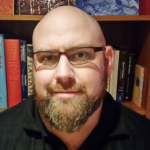- This topic has 7 replies, 2 voices, and was last updated 7 years, 10 months ago by
 Scott Newman.
Scott Newman.
-
AuthorPosts
-
-
January 4, 2018 at 3:34 am #47294
Paulo Lourenco
ParticipantHi guys,
To simulate a single cell like the ones you have on Lesson 21 – 3D Surface Plasmon, subsection Sub-wavelength Holes in Metallic Film, would it be enough to change the boundary conditions from PBC to APML and maybe also the APML tensor parameter?
-
January 9, 2018 at 8:02 am #47340
 Scott NewmanModerator
Scott NewmanModeratorHello Paulo,
Just to be clear on what you are asking for. Lesson 21 walks you through creating an array of holes in the metallic film. Are you asking to create a simulation that will model a metallic film with just one hole in it?
Scott
-
January 10, 2018 at 1:30 am #47348
Paulo Lourenco
ParticipantHi Scott,
Yes, a metallic film with just one hole.
Thank you.
-
January 11, 2018 at 5:32 pm #47367
 Scott NewmanModerator
Scott NewmanModeratorPaulo,
You are looking at 2 solutions:
Switching to PML:
You could move to a PML but you will need to make sure that your PML is not close enough to the hole (a resonant structure) that the loss introduced by the BC will not alter the optical characteristics.
Your second concern will be that the example in question is using the PBC with the input plan to achieve a plane wave like incidence, you cannot get this with the PML in place so you will need to reconsider your source.Keeping PBC:
If you move your PBC out to a sufficient distance that the fields from the hole and any “mirrored” holes does not overlap. This way you would be modelling independent holes and your results could be interpreted as those for a single hole.My Suggestion:
I would go with the PBC unless you want to model an actual experimental system in which case I would likely go with the PML and use an input configured to match my experimental source. -
January 13, 2018 at 4:09 am #47374
Paulo Lourenco
ParticipantHi Scott,
Right, keeping PBC would most probably lead to an increase of workspace simulation, which on a 3D simulation means more needed resources and longer simulation time; PML would be used for device’s simulation and selecting the input field accordingly…
Thank you for all your help.
-
January 14, 2018 at 2:42 pm #47384
 Scott NewmanModerator
Scott NewmanModeratorPaulo,
Just use an observation area to ensure that the field from any resonant structure is not overlapped with the PML, it too can alter your results.
Scott
-
January 14, 2018 at 4:27 pm #47385
Paulo Lourenco
ParticipantHi Scott,
You mean use an observation area to monitor overlapping fields? I think I fail to understand. Could you please elaborate a bit more…?
Thank you again.
-
January 19, 2018 at 11:52 am #47465
 Scott NewmanModerator
Scott NewmanModeratorI just noticed that my previous response to your question seems to have gone missing. What I mean is that I would create an observation area that cuts through your structure and extends to the boundaries you are concerned with. Then after running a simulation you can view that area and determine if the fields get close to your boundaries or not.
Scott
-
-
AuthorPosts
- You must be logged in to reply to this topic.

